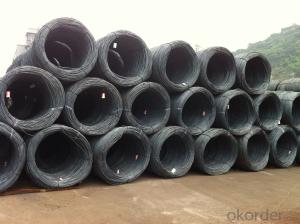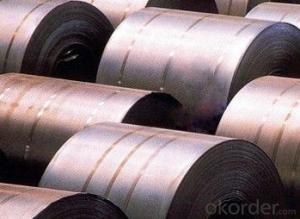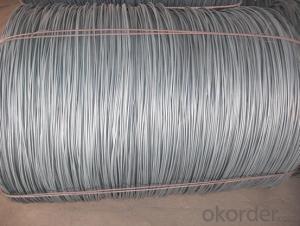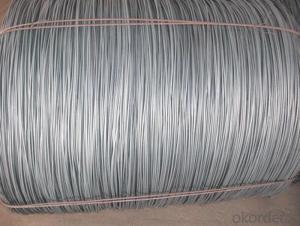Hot- rolled stainless steel coil for construction GB Q195
- Loading Port:
- Tianjin
- Payment Terms:
- TT OR LC
- Min Order Qty:
- 25 m.t.
- Supply Capability:
- 100000 m.t./month
OKorder Service Pledge
OKorder Financial Service
You Might Also Like
Product Description:
1.Description of Hot Dipped Galvanized Steel Coil Z275/Zinc Coated Steel Coil:
Galvanized steel coil is a special type of steel coil used in a number of different applications within fabrication and manufacturing environments. Steel coil of any kind is flat stock that is thin enough to be rolled into a coil or wound into a continuous roll. It is also able to be rolled out flat and cut at any length or shape needed. Having the steel coil galvanized helps the user by allowing it to be applied in outdoor fabrication projects.
2.Specifications of Hot Dipped Galvanized Steel Coil Z275/Zinc Coated Steel Coil:
1)Standard: AISI,ASTM,BS,GB,JIS
2)Grade:SGCC,DC51D,DX51D,DX52D,SPCC,SGCD,Q235,SGHC, G350…
3)Thickness: 0.14mm-2.5mm
4)Width: 100mm -600mm, 600mm-1500mm,762mm,914mm,1000mm,1200mm,1219mm,1250mm.
5)Length: 1000-6000mm or as customer’s requirement
3.Hot Dipped Galvanized Steel Coil Z275/Zinc Coated Steel Coil Images:
4.Hot Dipped Galvanized Steel Coil Z275/Zinc Coated Steel Coil Specification:
Trade information | ||
Technique | cold rolled | |
Standard | ASTM A653-2001,DIN10142-91,DIN1012--92, EN10327,JISG3302-2005,GB/T2518-2004 | |
Surface Treatment | Galvanized(Zinc 60—275g/m2)Oil,chromated as your requirement | |
Coil ID | 508mm/610mm | |
MOQ | 20 metric tons or negotiation | |
Package | Export standard package | |
Delivery Time | According to the order quantity | |
Trade Terms | FOB,CFR or CIF | |
Payment Term | T/T or L/C at sight | |
5.FAQ
We have organized several common questions for our clients,may help you sincerely:
①How about your company?
A world class manufacturer & supplier of castings forging in carbon steel and alloy steel,is one of the large-scale professional investment casting production bases in China,consisting of both casting foundry forging and machining factory. Annually more than 8000 tons Precision casting and forging parts are exported to markets in Europe,America and Japan. OEM casting and forging service available according to customer’s requirement.
②How to guarantee the quality of the products?
We have established the international advanced quality management system,every link from raw material to final product we have strict quality test;We resolutely put an end to unqualified products flowing into the market. At the same time, we will provide necessary follow-up service assurance.
③How long can we receive the product after purchase?
In the purchase of product within three working days, We will arrange the factory delivery as soon as possible. The pecific time of receiving is related to the state and position of customers.Commonly 7 to 10 working days can be served.
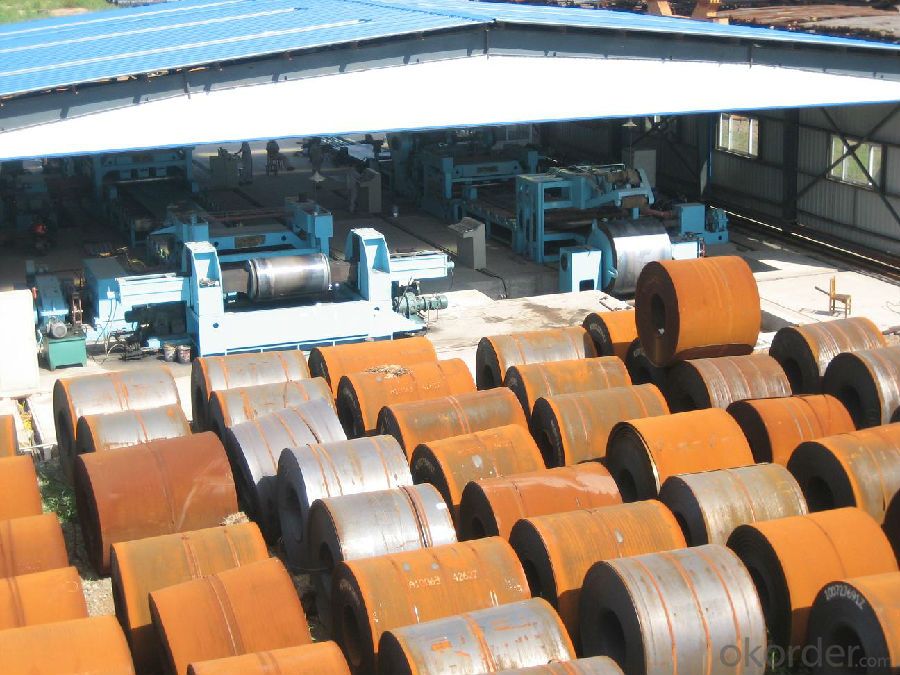
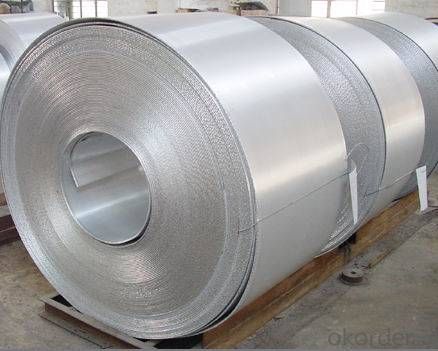
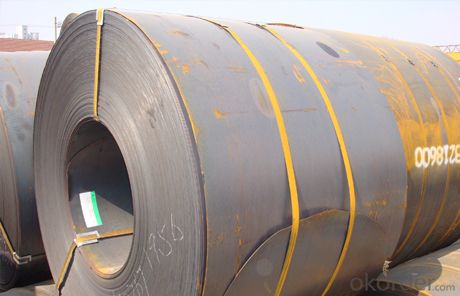
- Q:What are the common production processes for americium-coated steel wire rod?
- The common production processes for americium-coated steel wire rod typically involve a series of steps. First, the steel wire rod is manufactured through processes such as hot rolling or cold drawing to obtain the desired dimensions and characteristics. Next, the americium coating is applied onto the steel wire rod using methods such as electrodeposition or physical vapor deposition. This ensures a uniform and adherent coating of americium on the surface of the steel wire rod. Finally, the coated wire rod is subjected to quality control checks and may undergo additional treatments or processing, depending on the intended application.
- Q:What are the growth prospects for the steel wire rod market?
- The growth prospects for the steel wire rod market are promising due to increasing demand from various industries such as construction, automotive, and manufacturing. Additionally, the growing use of steel wire rods in infrastructure development projects and the rising trend of electric vehicles are expected to further drive market growth.
- Q:What are the different types of steel wire rod surface defects that can occur during wire drawing?
- During the wire drawing process, steel wire rods may experience a range of surface defects that can have adverse effects on the wire's quality and performance. These defects, which can be caused by different factors, include: 1. Scale: Arising from the hot rolling or annealing processes, scale refers to a thin layer of oxide that forms on the wire rod's surface. It manifests as a dark, flaky coating and can negatively affect the wire's ductility and adhesion. 2. Scratches: Wire rods can acquire visible lines or marks, known as scratches, during handling, transportation, or wire drawing. These scratches compromise the wire's strength and may lead to failure when subjected to stress. 3. Slivers: Small, elongated metal flakes, called slivers, can embed themselves on the wire rod's surface. They can originate from inadequate cleaning of production equipment or defects in the steel manufacturing process. Slivers pose risks such as wire breakage or surface roughness. 4. Scale pits: Depressions or cavities, referred to as scale pits, can form on the wire rod's surface due to the presence of scale or impurities during drawing. If sufficiently deep, scale pits can affect the wire's appearance and mechanical properties. 5. Decarburization: Decarburization occurs when the carbon content on the wire rod's surface diminishes, resulting in reduced strength and hardness. This phenomenon is commonly observed during high-temperature operations like annealing, and it manifests as a lighter or duller color compared to the wire's core. 6. Corrosion: Wire rods can undergo corrosion when exposed to moisture, chemicals, or other environmental factors. This corrosion can cause pitting, rusting, or discoloration on the wire's surface, adversely affecting both its appearance and mechanical properties. 7. Lamination: Lamination defects manifest as thin layers or flakes that detach from the wire's surface. They can arise from flaws in the steel manufacturing process or insufficient bonding between layers during wire drawing. Lamination defects significantly compromise the wire's strength and ductility. To ensure the production of high-quality wire products, manufacturers employ diverse techniques, such as surface cleaning, inspection, and quality control measures, to identify and minimize these surface defects during the wire drawing process.
- Q:How is steel wire rod used in the manufacturing of wire forms for fire protection systems?
- Steel wire rod is used in the manufacturing of wire forms for fire protection systems as it provides strength, durability, and resistance to high temperatures. The steel wire rod is shaped and bent into various forms such as brackets, hooks, and supports, which are essential components of fire protection systems. These wire forms are then used to secure sprinkler heads, pipes, and other fire suppression equipment, ensuring their proper installation and functionality. Moreover, the steel wire rod allows for easy customization to meet specific design requirements, making it a crucial material in the manufacturing process of wire forms for fire protection systems.
- Q:What are the different shapes of steel wire rod?
- Steel wire rods come in various shapes and sizes, each designed to have specific properties and applications. Some common shapes of steel wire rods include: 1. Round: This is the most common shape of steel wire rod and is typically used for general-purpose applications such as fencing, construction, and manufacturing of various products. Round wire rods offer excellent strength and versatility. 2. Square: Square wire rods have four equal sides and are often used in applications that require additional strength and stability, such as manufacturing of springs, fasteners, and electrical wiring. 3. Flat: Flat wire rods have a rectangular cross-section and are commonly used in applications that require a wide, but thin, surface area. They are often used in the manufacturing of automotive parts, furniture, and conveyor belts. 4. Hexagonal: Hexagonal wire rods have six sides and are often used in applications that require a higher level of grip or torque, such as in the manufacturing of nuts, bolts, and mechanical components. 5. Deformed: Deformed wire rods have ridges or deformations along their surface, which enhances their bonding properties and makes them suitable for reinforcement purposes, such as in the production of reinforcing bars (rebars) used in construction projects. These are just a few examples of the different shapes of steel wire rods available. The choice of shape depends on the specific requirements of the application, including strength, stability, grip, and bonding properties.
- Q:What is the hardness range of steel wire rod?
- The hardness range of steel wire rod typically falls between 30 and 40 on the Rockwell C scale.
- Q:How is steel wire rod straightened and cut to length?
- The process of straightening and cutting steel wire rod, known as straightening and cutting, involves the use of a machine. This machine, referred to as a straightening machine, aids in the elimination of any bends or twists in the wire rod by feeding it through a series of rollers that exert pressure and gradually straighten it. Once the wire rod is straightened, it is then passed through a cutting machine that is specifically designed to cut through steel wire rods. This cutting machine is equipped with a blade or cutting tool and allows for the rod to be cut into the desired lengths. The length is determined by setting the desired length on the machine. The straightening and cutting process can be carried out either automatically or manually, depending on the scale of production. In automated systems, the wire rod is fed into the straightening and cutting machines through mechanisms such as conveyor belts. The desired length is set on a control panel, and the machines automatically straighten and cut the rod accordingly. For smaller scale operations, manual straightening and cutting are commonly employed. In this case, an operator manually feeds the wire rod into the straightening machine and then uses a cutting tool to manually cut it to the desired length. This process requires skill and precision to ensure accurate and precise straightening and cutting. Overall, the process of straightening and cutting steel wire rods is crucial in manufacturing precise lengths and straightness. It plays a vital role in industries such as construction, automotive, and manufacturing, where steel wire rods are utilized in various applications.
- Q:What are the common industry qualifications for steel wire rod professionals?
- The common industry qualifications for steel wire rod professionals typically include a bachelor's degree in metallurgical engineering or a related field, relevant work experience in the steel industry, and knowledge of steel manufacturing processes. Additionally, certifications such as Certified Steel Professional (CSP) or Certified Metallurgical Engineer (CME) can further enhance one's qualifications in this field.
- Q:What are the common production processes for tungsten-coated steel wire rod?
- The common production processes for tungsten-coated steel wire rod include wire drawing, cleaning and degreasing, tungsten coating, and heat treatment.
- Q:How is steel wire rod used in the manufacturing of clothes hangers?
- Clothes hangers rely on steel wire rods for their structural integrity. These rods serve as the foundation for the hanger, offering the required strength and durability to support various clothing items. They are typically molded into different shapes, such as the classic triangular form or the more contemporary slimline design. The production process begins by carefully selecting high-quality steel wire rods, usually crafted from either carbon steel or stainless steel. These rods are then fed into a machine that straightens and cuts them into specific lengths, depending on the desired hanger size. Once cut, the wire rods are transferred to a shaping machine, where they are bent and molded into the desired hanger shape. During the bending process, the steel wire rods are skillfully manipulated to form hooks and curves. This ensures that the hanger can securely hold different garments, including heavy coats or delicate dresses, without causing any damage or distortion. After shaping, a protective coating is often applied to the steel wire rods to prevent rust and enhance their appearance. The coating material may vary, ranging from plastic, vinyl, to powder coating, depending on the desired finish and functionality of the hanger. Once the steel wire rods have been shaped and coated, they are combined with other components, such as clips or non-slip features, to create the final clothes hanger. These additional parts may be made from different materials, but the steel wire rods remain the backbone of the hanger, providing the necessary strength and stability. Overall, steel wire rods play a vital role in clothes hanger manufacturing, offering a robust and enduring framework. Their ability to be molded into various designs ensures that hangers can accommodate different types of clothing, making them indispensable tools for organizing and storing garments.
1. Manufacturer Overview |
|
|---|---|
| Location | |
| Year Established | |
| Annual Output Value | |
| Main Markets | |
| Company Certifications | |
2. Manufacturer Certificates |
|
|---|---|
| a) Certification Name | |
| Range | |
| Reference | |
| Validity Period | |
3. Manufacturer Capability |
|
|---|---|
| a)Trade Capacity | |
| Nearest Port | |
| Export Percentage | |
| No.of Employees in Trade Department | |
| Language Spoken: | |
| b)Factory Information | |
| Factory Size: | |
| No. of Production Lines | |
| Contract Manufacturing | |
| Product Price Range | |
Send your message to us
Hot- rolled stainless steel coil for construction GB Q195
- Loading Port:
- Tianjin
- Payment Terms:
- TT OR LC
- Min Order Qty:
- 25 m.t.
- Supply Capability:
- 100000 m.t./month
OKorder Service Pledge
OKorder Financial Service
Similar products
New products
Hot products
Hot Searches
Related keywords






